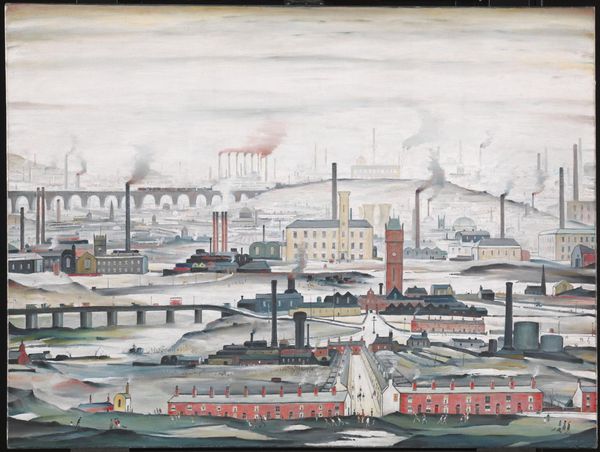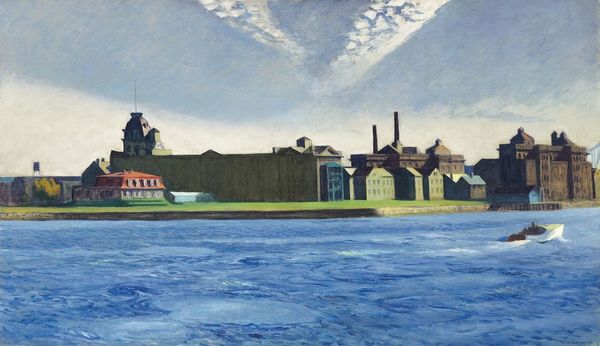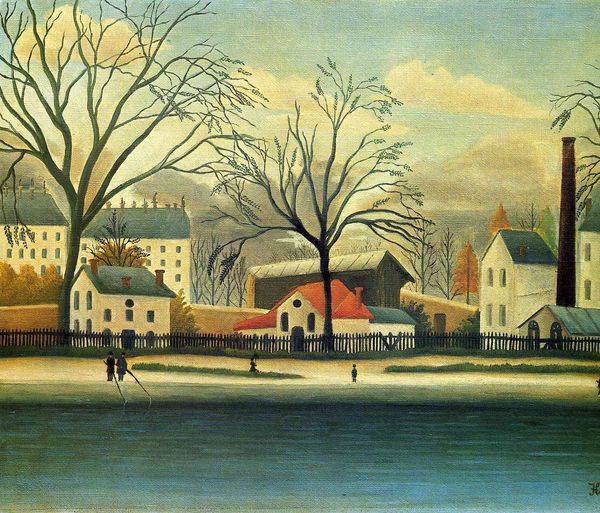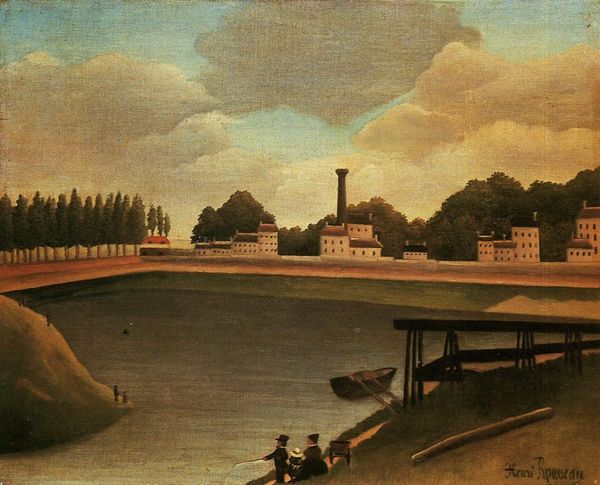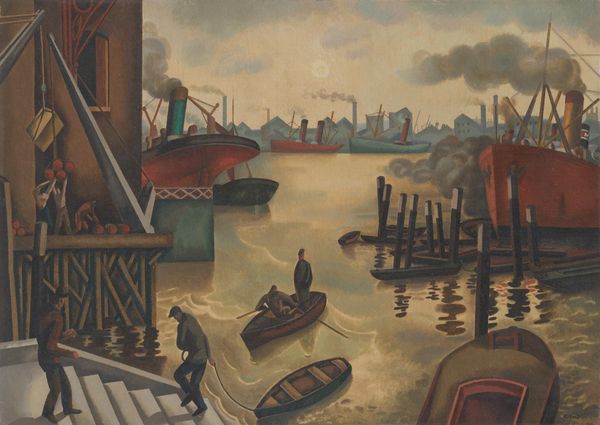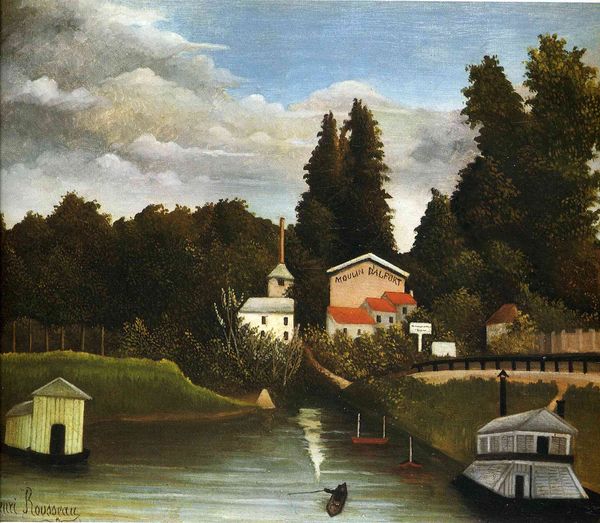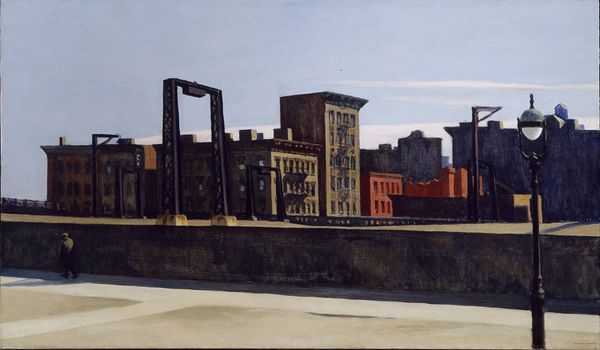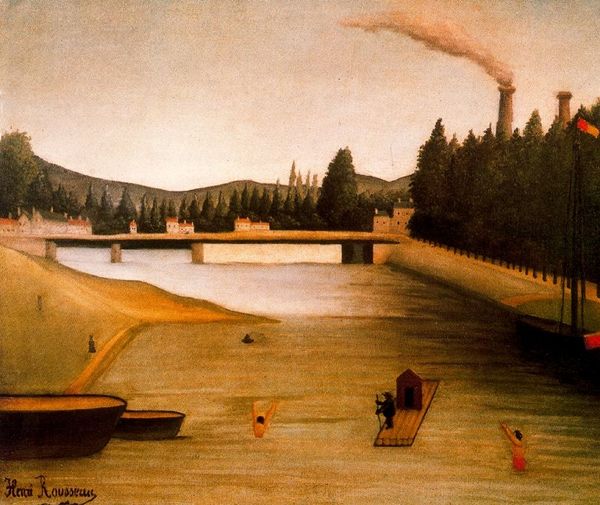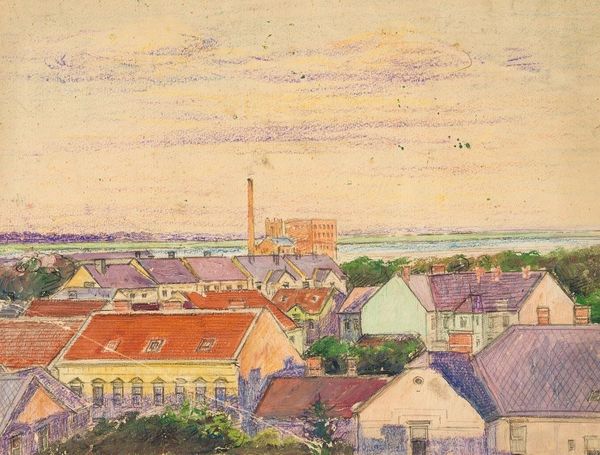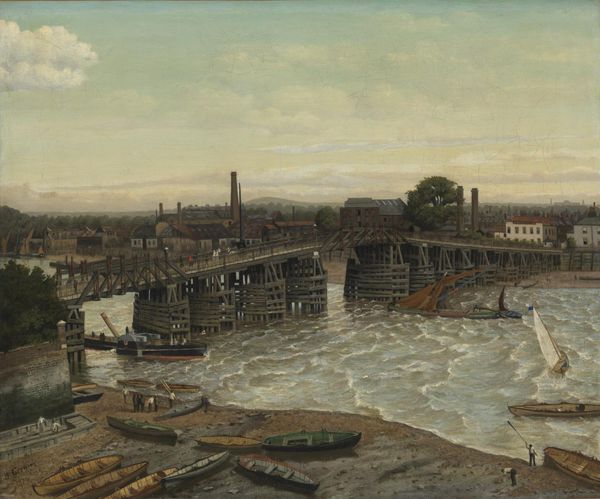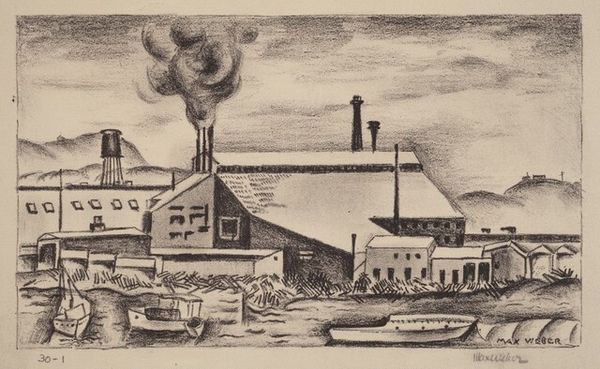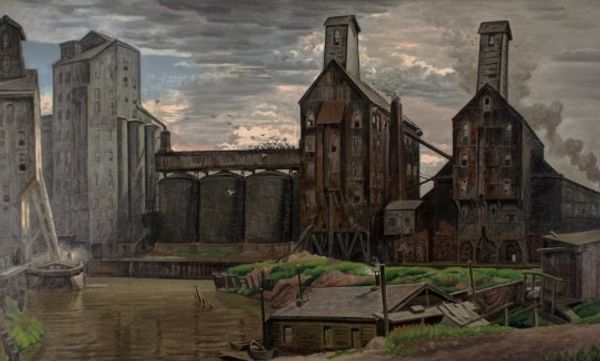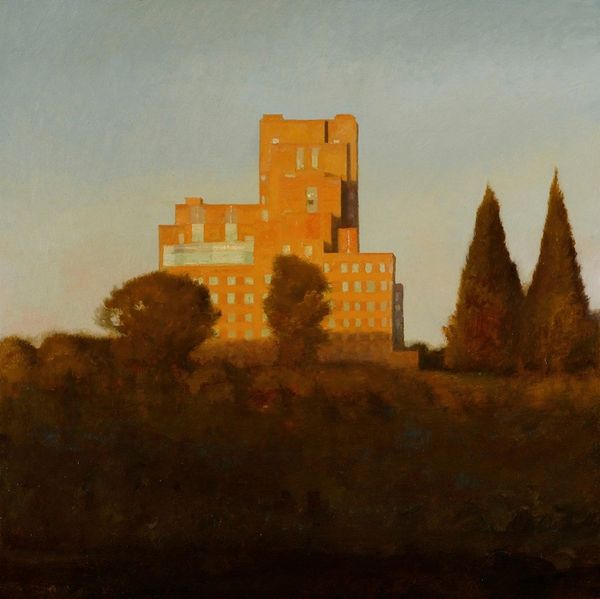
Copyright: Public domain
Editor: This is Henri Rousseau's "View of the Outskirts of Paris," painted in 1896. It's an oil painting currently housed at the Detroit Institute of Arts. The mood feels strangely calm despite the industrial imagery; a sort of dreamlike serenity, even. How do you interpret this work? Curator: This cityscape, ostensibly documenting the urban periphery, speaks volumes about societal transformation. Notice the stark, towering chimneys juxtaposed with the placid river – what does that dichotomy suggest to you? Editor: It's like the past meeting the future, almost awkwardly. Curator: Precisely. Consider how factories symbolized progress and modernity at the time, yet the simplified forms and muted palette hark back to earlier, less industrialized times. Rousseau uses these visual cues to evoke a sense of cultural memory – an awareness of what's being gained and perhaps lost. The bridge in the distance could represent a span of time as well as a passage to new opportunities. What emotions are conjured by this unusual composition? Editor: A kind of quiet acceptance, maybe? There's no judgment, just…observation. Curator: Yes, there’s a detached, almost childlike wonder. It hints at a larger psychological theme about humanity's evolving relationship with technology and nature, themes that resonate powerfully even today. It is up to the viewers to place their experiences within its visual frame. Editor: I never considered the emotional weight behind the imagery before, viewing it just as a painting. Now, it speaks of industrial and social tensions. Curator: Precisely. Seeing deepens insight.
Comments
No comments
Be the first to comment and join the conversation on the ultimate creative platform.
